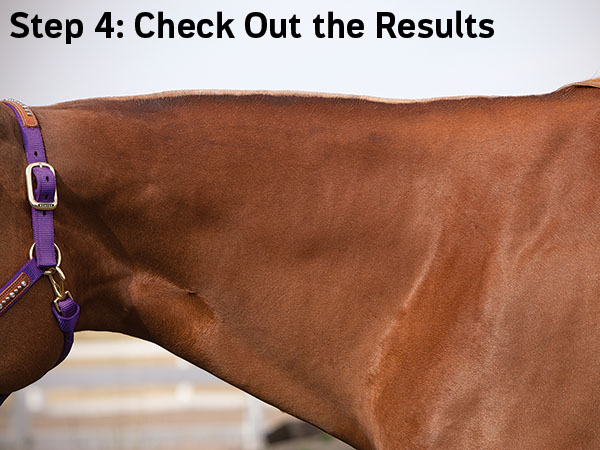Roached manes are more commonly seen—and accepted—in the show pen than they used to be, in my experience as a judge and trainer. A horse with minimal mane or one that rubs out a section doesn’t have to sacrifice a polished appearance. Done correctly and on a horse with a nice shape and balance to his neck, a roach can look sharp. It’s also lower-maintenance for the rider—no banding or braiding of manes before a show. And they can offer convenience for recreational riders. (No fighting burrs out of your horse’s mane!)

Some disciplines may remove the entire mane, including the forelock, but if you plan on showing, check your association’s rulebook regarding what you can and can’t clip. For example, AQHA requires that you leave the forelock and a tuft of hair at the withers.
Don’t take on roaching a mane lightly. Carefully consider your choice before roaching your horse’s mane, perhaps even consulting trusted trainers and experts for their opinions whether it’ll work well for your mount. Once you’ve decided if your horse can rock the roach, it’s an easy four-step process.
Step 1: Prep. Looks like this sorrel horse rubbed out a good portion of his mane and is about to get roached. Begin with a clean, dry mane, with all tangles removed. Clipping a dirty or wet mane dulls blades and creates a choppy cut—the last thing you want when attempting a smooth, chiseled look.

Before you get started clipping, choose the right blade for the job. A #10 blade provides a crisp, clean shave. Higher-number blades, like a #40, shave too closely, resulting in a scalped look, which is undesirable. Lubricate the blades with manufacturer-recommended oil to keep the blades cool and cutting smoothly.
Step 2: Clip the Mane Side. Begin at your horse’s withers—leaving a tuft of hair, per most association rules—and clip up the neck, on the side his mane lies, toward his poll. Hold a 2-inch section of mane taut for more control over the clip as you work your way up the neck. Pull the hair slightly forward to help the clippers work through the mane.

Step 3: Clip the Opposite Side. Move to the other side of your horse to clip the opposite side. Again, work from the withers—leaving that all-important tuft of mane—up toward his poll. This is an opportunity to “sculpt” your horse’s mane line with an even, tidy clip. Work carefully to avoid nicking his neck. Move clipped hair out of the way of the clippers so they can function properly.

Step 4: Check Out the Results. This horse’s balanced, well-shaped neck is accentuated by his roached mane. The clean clip looks professional, precise, and tidy, which is essential. If you’ve roached your horse’s mane because he struggles to grow hair, he’ll probably require infrequent touch-ups. A horse that can grow a full mane, but is roached for other reasons, will need regular touch-ups to keep the neat, tidy look. Key tip: Clip at least three to four days prior to a show to allow time for the hair to naturally fill-in.







